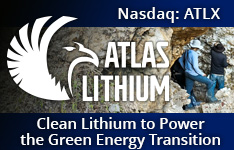The Energy Report: More than a year after a tsunami left the Fukushima nuclear reactor in Japan without the ability to sufficiently cool itself, Japan shut down the Tomari 3 nuclear reactor, leaving all 44,200 megawatts (MW) of the country's nuclear capacity idle with no set date for restart. When investors hear news like that, they might get the impression that nuclear power is a sunset industry. What's your take?
Amir Adnani: There is no doubt that the nuclear disaster in Japan has been one of the more challenging events facing the industry. Although just a couple weeks after those reactors were taken off-line, a town with two reactors in the western prefecture of Fukui voted in favor of restoring operations. Prime Minister Yoshihiko Noda and the federal government now have to make the final decision and several media outlets are reporting that the government may order the restart of two reactors next week. Many industry observers and analysts are expecting about 20–30 of the reactors to come back on-line over the course of the next year.
Japan is very much dependent on nuclear power. About one-third of Japanese electricity was generated through nuclear power prior to Fukushima. As recently as this February, major industries, like Japan's steelmakers, have been urging the early restart of nuclear power plants. They fear potential power cuts and the rising costs associated with electricity from fossil fuels could affect their viability. Japan is a major export economy and has very energy-intensive industries to maintain and run competitively. Nuclear power will ultimately, in my opinion, be part of the energy mix in Japan. With time, we'll see plants come back on-line.
TER: Is that enough to assuage investor concerns? What about what's happened in Germany, Switzerland and some other European nations that have curtailed energy produced by nuclear reactors?
AA: Certainly investors have sold off uranium holdings based on the situation in Japan and I believe there was both an emotional and political knee-jerk reaction toward the industry. However, if we take a closer look at this through a sober vantage point, the effects of Germany phasing its reactors offline by 2022 is not nearly as material as the flip side of it: There remains significant nuclear growth in developing markets. Led by China and India, countries like Russia, South Korea and even oil-rich nations like Saudi Arabia and the United Arab Emirates are planning to build reactors that would nearly double the world's installed nuclear capacity by 2030. These countries continue to see nuclear power's unique ability to generate baseload power in a carbon dioxide-free and low-cost way as a very big advantage in their energy mix.
TER: Where is the growth for nuclear in a post-Fukushima world going to come from?
AA: The growth in the nuclear industry is going to come from exactly where it was going to come from pre-Fukushima. The countries and the economies that are expanding most rapidly are the ones that really need more power. The growth isn't going to come from the West. In fact, only 3% of the reactors that are under construction right now—there are about 65 reactors under construction—are in G7 countries. The top four markets are China, Russia, India and South Korea. Saudi Arabia plans to build 16 nuclear reactors, which is a $400 billion program. Chinese officials have reiterated the country's plans to grow its nuclear capacity to about 70 gigawatts (GW) by 2020. India plans to get to about 60–63 GW of installed nuclear capacity by 2030 and it further aims to supply 25% of electricity from nuclear power by 2050.
The plans to develop nuclear power in China and other countries are very much driven by a set of realities that is very different and very acute. People are dying every year in China, literally choking to death, because of all of the nasty toxins that are being put into the environment by burning coal. It takes a lot of infrastructure to get coal into various places in China where some of that infrastructure doesn't exist yet. No other form of power can match nuclear power's ability to generate electricity in a low-cost, emission-free manner on a baseload scale.
Having said that, there is incremental growth in the developed world, too. The U.S. Nuclear Regulatory Commission approved four licenses earlier this year for operating nuclear reactors to come on-line in Georgia and South Carolina. They are the first licenses of this type to be issued in the U.S. in almost 30 years. Even in the United Kingdom there have been announcements to build seven or eight new nuclear reactors. It is very positive to see those developments post-Fukushima.
TER: Nuclear power has long-term potential, as you alluded to, but many investors want to make money now. What's the path to profits in the near term?
AA: There might be different investment timelines out there, but any investor can appreciate a good bargain. Uranium is a very unique investment proposition right now. It's the only sector that had a black swan event occur in it—Fukushima—that wiped a lot of market value off the table for publicly traded companies. The whole resource sector is also under selling pressure and uranium is also under that pressure.
Almost every possible punch you can imagine has been applied to the uranium industry. However, the fundamentals and catalysts of the uranium sector are very compelling. Other resource stocks—silver, nickel, copper—are down anywhere between 12–15% over the last three months because the underlying commodity is down as well. Uranium equities are down, but the underlying commodity is unchanged. In fact, the silver lining in this whole thing is that since Fukushima, the price of uranium has found a very stable base at $50–52/pound (lb) and term price is at $61.50/pound.
TER: It was about $70/lb on February 28, 2011, just before the Fukushima disaster.
AA: Correct. The volatility in other commodities and concerns about growth in China or Europe that have weighed on other resources haven't weighed on the price of uranium. I think this speaks volumes to the fact that there is a real supply imbalance in the uranium business. Even discounting for additional new reactors that are going to be coming on-line, we have a situation today where we simply don't mine enough uranium to meet current reactor requirements.
There aren't too many metals that have a gap of about 40 million pounds (Mlb)/year (demand weighs in at 180 Mlb/year versus 140 Mlb of annual mine production). That gap is only going to widen next year due to the expiration of the Megatons to Megawatts program, a secondary source of supply, in which uranium is derived from dismantled Russian nuclear warheads. That's about 15% of the global uranium market. Of course, demand is going to grow because 65 reactors are going to be coming on-line in the near future and another 100–150 reactors are at various stages of planning and permitting. The supply-demand fundamentals in uranium are very compelling.
The fact that supply is tight is the reason that the price of uranium has been supported at $50/lb. However, the reality is that there won't be any mine construction at $50/lb uranium. A study by JPMorgan in January showed that $80/lb uranium is needed to cover the capital expenditures (capex) to build conventional mines. Clearly, at $50/lb we're not there. Supply needs to come on-line. There needs to be a higher uranium price to stimulate interest in mine construction.
TER: If operations aren't going to get built unless there is a higher uranium price, uranium is going to be more highly valued. If it gets to $80/lb, margins go up. You have extensive experience funding resource companies. What's the current appetite for nuclear equities among institutional investors?
AA: It's very difficult to find anyone who doesn't see the compelling case being built in uranium. The valuations are very attractive. Valuations today are at the same levels as in 2009. But in 2009, the price of uranium was $40/lb, the expiration of Megatons to Megawatts was still four years away and there weren't as many reactors under construction. Institutional investors see that, but the key event that people are really watching is developments in Japan.
TER: You've led Uranium Energy Corp. (UEC:NYSE.A), the first U.S.-based uranium producer to come along in the last six years, into production. But why in Texas?
AA: Uranium mining tends to be a very license-intensive business. It takes a long time to permit projects, but there are varying attitudes from state to state. We really felt that Texas would be the path of least resistance to start production because the permitting happens at the state level with the Texas Commission on Environmental Quality, with some oversight from the Environmental Protection Agency (EPA).
In other states, you have the state and the EPA, but you also have to deal with the U.S. Nuclear Regulatory Commission.
South Texas also has a 30-year history with uranium mining. The uranium belt in South Texas, which extends about 400 miles from south of San Antonio down to the border with Mexico, tends to have primarily sandstone-hosted uranium geology, which is the perfect environment for in situ recovery (ISR) mining of uranium. This is by far the lowest-cost method of mining uranium.
However, we don't view ourselves as being just a Texas company. We have projects in six different U.S. states. We have also acquired projects in South America.
TER: Your Palangana operation involves recovering uranium via in situ recovery (ISR). How does that work and what are its impacts on the environment?
AA: ISR is a dramatically different form of mining uranium compared to open-pit or underground mining. It's a process where gaseous oxygen is added to the groundwater that is immediately above a uranium deposit and pumped into the ore body. It causes the uranium contained in the ore to dissolve into solution. The solution with the dissolved uranium is then pumped to the surface where it is separated, further processed and dried into yellowcake that is then shipped to conversion facilities for sale to nuclear plants.
The whole mining process is really far safer, far less unsettling to the environment and far less expensive in terms of both capex and cash costs per pound than open-pit or underground mining.
TER: Is the solution that is pumped into the ground a threat to the water table?
AA: It's oxygen and water—like soda water. Carbon dioxide is sometimes added sparingly. It's very benign. It's not like fracking. It doesn't use the ingredients that fracking uses or go to the depths that fracking does. We're going 400–700 feet from surface. Fracking targets are thousands of feet down.
TER: What's UEC's path to growth from here?
AA: The initial focus is on growing production and cash flow from our Texas operations, but we've done a meaningful job growing our in-ground resources through acquisitions we've made post-Fukushima, in Paraguay and in Arizona. We've put our money where our mouth is and made six acquisitions since Fukushima.
We believe that the beaten-down valuations in the uranium sector represent a very unique and once-in-a-lifetime opportunity to grow. If we can grow at a time like this, when valuations are very attractive compared to their historic levels, then we've done a good job creating shareholder value.
TER: What is your planned production in terms of pounds?
We have a hub-and-spoke production strategy in South Texas and are working toward an initial production rate of 1 Mlbs per annum. The company is also growing our Texas resources by starting a drilling campaign at our Burke Hollow project last month and we're starting drilling this month at our Channen project.
Outside of Texas, we're trying to grow the company in Paraguay, which has similar geology to South Texas. We have a large land package with about 1 million acres and established resources. In Arizona, we recently established one of the largest single uranium resources at our Anderson project of about 29Mlb U3O8.
TER: Are you looking to acquire other small uranium companies, or could you be an acquired at this point?
AA: We think this is a time to grow and take advantage of the bargains out there. If you think there's an attractive uranium project out there that you liked before Fukushima, the geology and Mother Nature haven't changed, but the price tag has gone dramatically lower. This is the best time for us to make those acquisitions and we have been making them. What we'd like to focus on is making sure that our operations in Texas successfully grow to the levels we expect. This is not an environment to be thinking about getting acquired. This is an environment to be thinking about acquiring and taking advantage of low valuations.
Post-Fukushima, there has been quite a bit of merger and acquisition (M&A) activity with the bidding war between Rio Tinto (RIO:NYSE; RIO:ASX) and Cameco Corp. (CCO:TSX; CCJ:NYSE) and a number of acquisitions by ARMZ Uranium Holding Co. and Chinese-related companies. It goes to show that the big players think this is a good time for M&A.
TER: Do you have any parting thoughts for us?
AA: In 2007, there was what you could call a uranium bubble—there was a lot of market enthusiasm and excitement for uranium, and the price of uranium was north of $100/lb. Had you asked me then what the three reasons to be bullish on uranium were, I would have said globally, we consume significantly more uranium than we mine, the growth coming out of China, India, Russia and other emerging economies, which will nearly double the world's nuclear capacity by 2030, and that the Megatons to Megawatts accord expires in 2013, and that will decrease supply by about 15%. Those would have been the three reasons in 2007 to consider investing, and everyone was. The price of uranium was almost three times what it is right now.
Today, if you ask me what the three reasons are to be bullish on uranium, they are the exact same reasons that they were in 2007—only that we have more reactors under construction in the world today than we did in 2007. Megatons to Megawatts expires next year. The valuations in this sector are far lower than in 2007, yet the fundamentals are becoming more compelling.
The nuclear industry is going to be a safer industry moving forward because of what happened in Japan. That's an important takeaway. It will continue to grow and be an important part of our energy mix in the 21st century because of its unique ability to generate large amounts of base-load power, at low cost and with no emissions. The valuations in the sector are near all-time lows and that makes it timely to be looking at the sector right now.
TER: It sounds like the pause button was hit in 2011 on the uranium story and once that pause button is pressed again we can look forward to growth.
Amir Adnani is a founder of Uranium Energy Corp. and has served as the president, CEO and a director since 2005. Under his leadership, Uranium Energy has become North America's newest uranium-producing company and the first uranium producer in the U.S. in more than seven years. The company has achieved its prime status, including the broad support of major securities analysts and institutional investors, due in large part to Adnani's early and continuing focus on bringing many of the uranium industry's most experienced technical personnel into management.
Want to read more exclusive Energy Report articles like this? Sign up for our free e-newsletter, and you'll learn when new articles have been published. To see a list of recent interviews with industry analysts and commentators and learn more about critical metals companies, visit our Energy Report page.
DISCLOSURE:
1) Brian Sylvester of The Energy Report conducted this interview. He personally and/or his family own shares of the following companies mentioned in this interview: None.
2) The following companies mentioned in the interview are sponsors of The Energy Report: Uranium Energy Corp. Streetwise Reports does not accept stock in exchange for services. Interviews are edited for clarity.
3) Amir Adnani: I personally and/or my family own shares of the following companies mentioned in this interview: Uranium Energy Corp. I personally and/or my family is paid by the following companies mentioned in this interview: Uranium Energy Corp. I was not paid by Streetwise Reports for participating in this story.










































